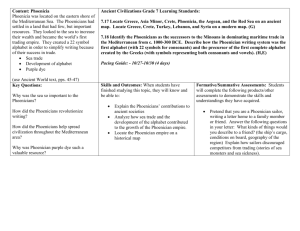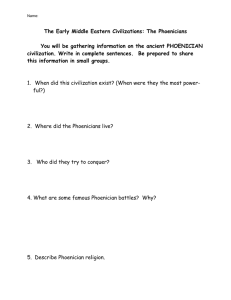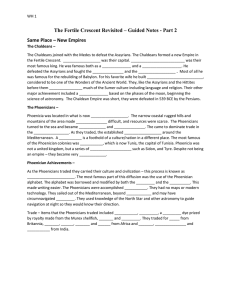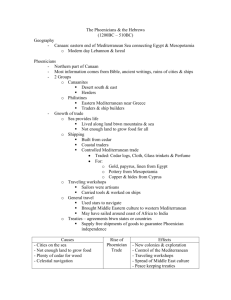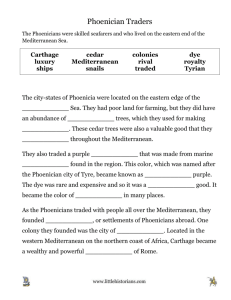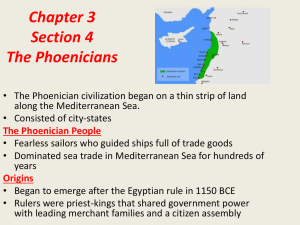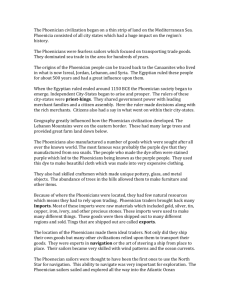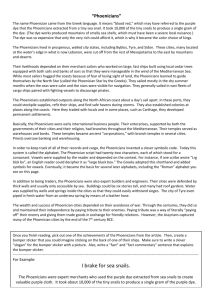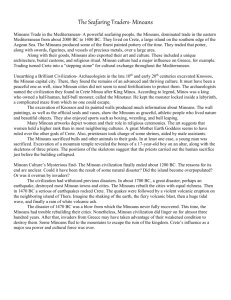The Phoenicians
advertisement
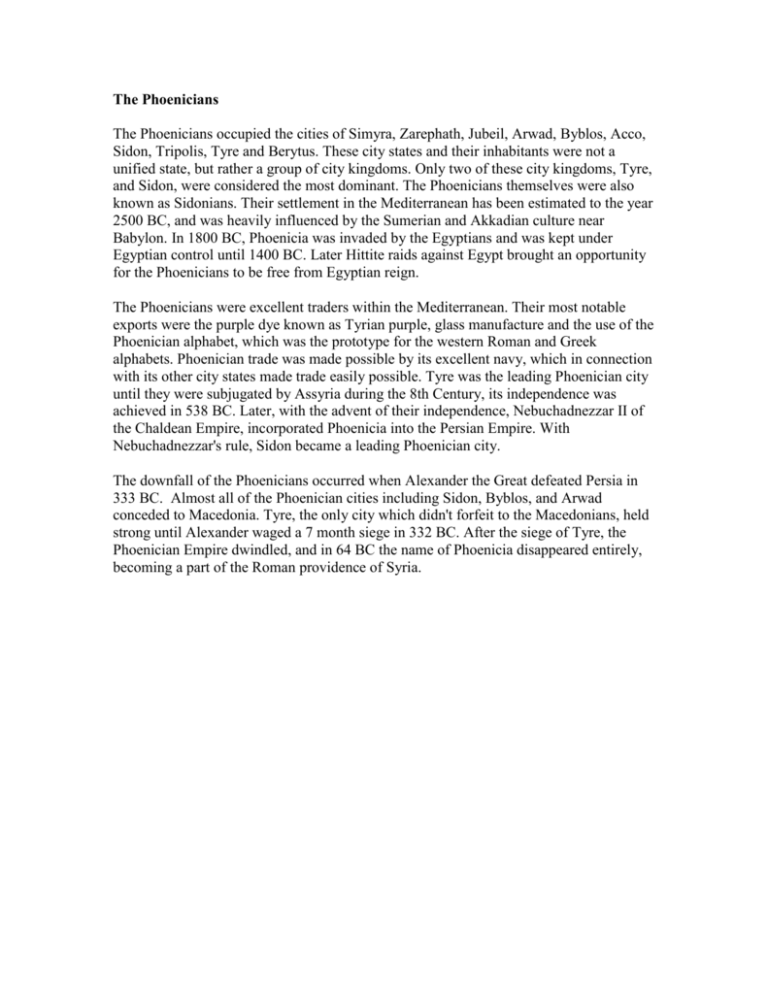
The Phoenicians The Phoenicians occupied the cities of Simyra, Zarephath, Jubeil, Arwad, Byblos, Acco, Sidon, Tripolis, Tyre and Berytus. These city states and their inhabitants were not a unified state, but rather a group of city kingdoms. Only two of these city kingdoms, Tyre, and Sidon, were considered the most dominant. The Phoenicians themselves were also known as Sidonians. Their settlement in the Mediterranean has been estimated to the year 2500 BC, and was heavily influenced by the Sumerian and Akkadian culture near Babylon. In 1800 BC, Phoenicia was invaded by the Egyptians and was kept under Egyptian control until 1400 BC. Later Hittite raids against Egypt brought an opportunity for the Phoenicians to be free from Egyptian reign. The Phoenicians were excellent traders within the Mediterranean. Their most notable exports were the purple dye known as Tyrian purple, glass manufacture and the use of the Phoenician alphabet, which was the prototype for the western Roman and Greek alphabets. Phoenician trade was made possible by its excellent navy, which in connection with its other city states made trade easily possible. Tyre was the leading Phoenician city until they were subjugated by Assyria during the 8th Century, its independence was achieved in 538 BC. Later, with the advent of their independence, Nebuchadnezzar II of the Chaldean Empire, incorporated Phoenicia into the Persian Empire. With Nebuchadnezzar's rule, Sidon became a leading Phoenician city. The downfall of the Phoenicians occurred when Alexander the Great defeated Persia in 333 BC. Almost all of the Phoenician cities including Sidon, Byblos, and Arwad conceded to Macedonia. Tyre, the only city which didn't forfeit to the Macedonians, held strong until Alexander waged a 7 month siege in 332 BC. After the siege of Tyre, the Phoenician Empire dwindled, and in 64 BC the name of Phoenicia disappeared entirely, becoming a part of the Roman providence of Syria.
